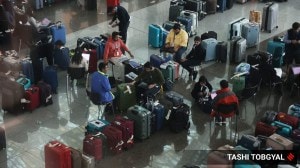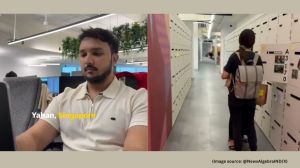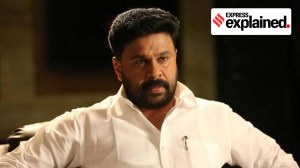Click here to follow Screen Digital on YouTube and stay updated with the latest from the world of cinema.
Rahul Bose and his ode to waiting in Antaheen
On Rahul Bose’s 54th birthday, here is a look at the actor's moving performance in Aniruddho Roy Chowdhury's National Award-winning 2009 film Antaheen.
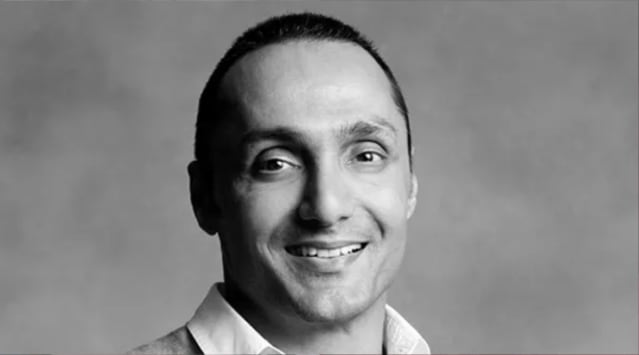 Rahul Bose was furious at an airlines. (Photo: Rahul Bose/Instagram)
Rahul Bose was furious at an airlines. (Photo: Rahul Bose/Instagram)Antaheen (The Endless Wait) released in 2009 to widespread critical acclaim. The movie, directed by Aniruddho Roy Chowdhury, eventually went on to win the Best Feature Film award at the 56th National Film Awards, along with awards for Shreya Ghoshal and Avika Mukhopadhyay for their stunning playback and cinematography in the film. The movie, which marked the Bengali debut of Radhika Apte, and the first on-screen appearance of Aparna Sen with real life partner Kalyan Ray, also featured a deeply layered and restrained performance by Rahul Bose.
Bose had already appeared in Chowdhury’s directorial venture Anuranan, where he was cast opposite Raima Sen and Rituparna Sengupta in the role of a London-based architect who just returned to India on a special project. Bose has always been a tricky actor to cast in a project. His height has more than often in the past hindered him from being cast in traditional roles that are reserved for ‘heroes’. Moreover, his features, with eyes which are nothing short of pools reflecting the very depths of his soul, have a sharp sense of innocence that is rarely seen in performers these days. His voice is not one with a baritone, another red flag for heroes in our country. Yet, there has always stayed in his voice a strange boyish charm.
 Photo: Mumbai Mantra
Photo: Mumbai Mantra
Hence, it comes as no surprise that his filmography too stands as a series of films trying to strike a subtle balance between the experimental and the commercial. His most memorable performances too are in films where his characters required him to perform in a restrained and calm manner, working with minimal dialogue and instead using his body as an instrument to convey the needs of his character. It has only been recently that directors have started exploiting his potential for exhibiting villainy on screen by casting him in negative roles – something in which Bose is excelling (case in point his fabulous take down on the entitled misogynist in Dil Dhadakne Do followed by his sinister portrayal of an unhinged sexually repressed man in Bulbbul).
Antaheen too is one of those rare examples where a director used to the film’s benefits everything that is Rahul Bose’s strengths. Chowdhury also is a fantastic director for actors to work with. In Pink, he put to fantastic use Amitabh Bachchan’s growing age and his baritone. Even in a polarising film on adultery like Aparajito Tumi, he brought forward a quieter, more cosmopolitan form of Prosenjit and his mega-star persona that few directors before him had done. In Antaheen too, he used Bose in a fashion that resulted in the actor delivering one of his finest performances till date.
 Photo: Mumbai Mantra
Photo: Mumbai Mantra
In Antaheen, Bose plays an IPS officer, lonely on the inside but stoic on the outside, who gains fame overnight following the exposure of an illegal arms racket. He lives with his widowed aunty (Sharmila Tagore in the film’s most poetic role), takes life advice from his cousin (Kalyan Ray) and estranged sister-in-law (Aparna Sen in a pitch-perfect avatar), and spends his nights talking to people on virtual chat-rooms. His eventual romance with the journalist Brinda (Radhika Apte in a not so bad performance) is the stuff of old-school romance clichés. The two fall in love with each other over texts but are unaware of their real identities. The You’ve Got Mail homage is more than merely apparent in the film.
But to the credit of the film, it does not remain stuck merely at the level of exploring a will-they-meet or will-they-not-meet romance. It is interested in probing deeper concerns. Why are these two people here in the first place? What will happen if they do meet? The first time they meet, they fight. On their third meeting, at a common party, Bose cooks with Apte and then offers to drive her home. In the kitchen and then in the car, the two share a quiet silence and the film eventually prompts us into thinking – will these people actually work out in real life?
Rahul Bose never over-plays his part. In the scene where the two are chopping vegetables for dinner, Radhika Apte makes a sharp snide comment about his profession. Bose soon hands her a knife and asks her to draw a gash on his skin. The colour of blood is khaki, not red – he argues. The line is dramatic and carries with it a plethora of subtext in the larger context of the film. After all, Apte will die in a car accident in the climax of the movie. One of the parallel tracks of the film also involves the death of a young girl in a car accident and her mother mourning the same. But Bose delivers the line in a way akin to someone asking another to pass the salt. It is that naturally done.
 Photo: Mumbai Mantra
Photo: Mumbai Mantra
Sample another sequence. In the scene, where everyone comes over to Brinda’s house following her death, a sombre tune plays in the background. We hear Aparna Sen weeping copiously and Chowdhury does not mute her tears – because no background score can ever downplay the intensity of the sound of her physical grief. But the camera, which continues panning and tracking alternately, follows Bose as he for the first time makes his way through Apte’s room. His face is like a drop of ink blotting an entire blank canvas. There is initial grief due to the knowledge that someone he knew tragically passed away. Eventually, doubt creeps in due to the familiarity of the surroundings – these are spaces that have been described to him by his online lover. Could this be it? As he makes his way towards the balcony, his eyes fall on the kite the two discussed over their chats – stuck in the tangle of wires while being battered and torn. The pan breaks and an insert shot follows a reaction shot. Bose’s face registers the hurt of a lifetime.
In that singular moment, he not only sums up the pain of a lover who never really met his beloved but also the heartbreaking realisation that he is probably doomed now forever to a life of inescapable loneliness. My favourite sequence of the film forms mirror ends of the narrative structure. The film begins with Bose going to office every day, and a young girl coming to his car and him buying an entire bunch of roses from her. The film ends with Bose going back to work as Anindya’s bitter-sweet rendition of the Chandrabindoo classic “Bhindesh Tara” (My many splendored star) plays in the background.
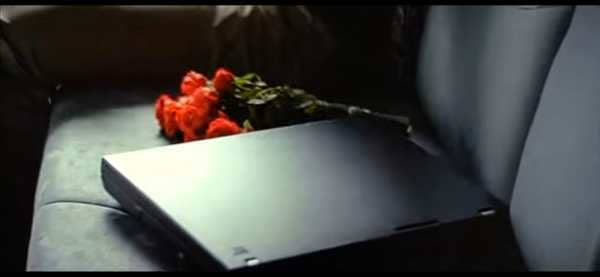 Photo: Mumbai Mantra
Photo: Mumbai Mantra
Sample the lyrics, “please ghum hoye jao chokhe/amar mon kharaper raate/amar raat jaga taara” (please rest as the sleep in my eyes/on my darkest sleepless nights/my sleepless star of the night sky). “Raat Jaga Tara” was the name used by Radhika Apte to talk to Rahul Bose on the chatrooms they frequented. But now after her death, he will return to sleepless nights of loneliness. He yearns for sleep, he yearns for company, he yearns for love. But all he can do now is wait. The young girl comes and knocks on his window, but today he just smiles and waves her away. He has no use for flowers or hope today, as his car rolls and gets lost in the bustling traffic of the metropolis.
- 01
- 02
- 03
- 04
- 05
















